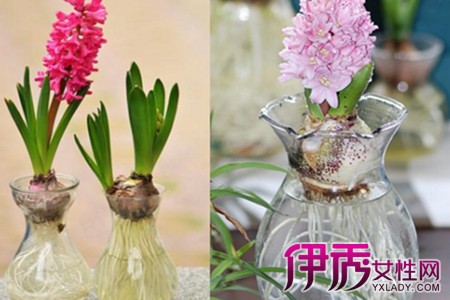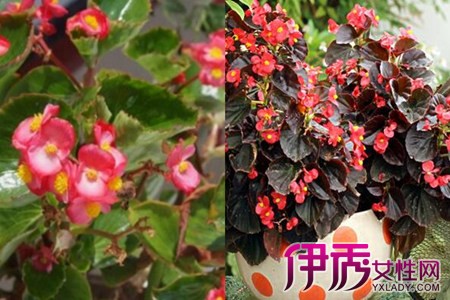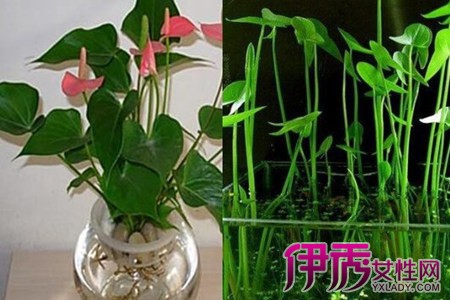Learn the hydroponic culture method of hyacinth and cultivate clean, beautiful, space-saving flowers. It's that simple.

In fact, it is not difficult to cultivate hyacinth by water. As long as you master a few essentials, you can successfully cultivate hyacinth in water. Next, let's talk about the specific methods and steps of hydroponic hyacinth, hoping to help more friends who want to hydroponically cultivate hyacinth.
Water culture hyacinth should first prepare utensils, do not think that just find a bottle or basin can be hydroponic hyacinth. Hyacinths are bulbous plants, which are larger than the roots of daffodils, but hydroponic plants cannot completely soak their roots in water. So be sure to find a glass bottle shaped like a gourd, which is most suitable for the growth of hyacinth.
After getting the hyacinth bulb, be sure to clean it, and it is best to rinse it with tap water. Then put it in a pre-prepared container. At the beginning, it is best to put the hyacinth in a dark place, or you can wrap it in a pure black plastic bag. Because hyacinth does not like light during this period of time, too bright light will also affect the speed of its rooting.
Hyacinths can normally grow and sprout slowly in three to five days after hydroponic culture. when they sprout more than five centimeters, you can take off the black plastic film and put the hyacinths in a warm, ventilated and bright place. When hyacinth grows to a month, it will be more than ten centimeters tall. At this time, nutrient solution should be added to the water.
Water culture hyacinth needs to change water two or three times a day at the initial stage of rooting, and the water temperature should be about ten degrees. After steady growth, you can change the water once a day, and try not to use the new tap water to change the water for hyacinth. Should be taken out of the tap water on the first day and put in the sun to increase oxygen after changing the hyacinth water, which can not only ensure that the water temperature is not cold, but also allow the nutrients in who can be fully absorbed by the flowers.
It's as simple as learning Anthurium andraeanum hydroponics to save space and cultivate flowers.
Anthurium andraeanum aquaculture is undoubtedly a very space-saving way, because we only need to have a few beautiful water bottles. But raising Anthurium andraeanum in water requires a process of domestication, because plants also have their own characteristics, so it will be difficult to adapt to changing their growing environment for a while. Next we will introduce to you the domestication process and breeding methods of Anthurium andraeanum water culture, hoping to help friends in need.
The first step of Anthurium andraeanum water culture: domestication. We can first dig out the Anthurium andraeanum in the flowerpot, then pick the leaves near the roots, reduce the excess rotten roots, and then wash the roots with water. The newly dug roots of Anthurium andraeanum are very afraid of the sun, so try not to put them in transparent utensils. If it is transparent glass products, you can cover the utensils with black plastic bags. Domestication usually takes a week, during which water has to be changed at least three or four times a day.
Anthurium andraeanum water raise the second step: increase nutrition. Anthurium andraeanum will be domesticated after a week, after which there is no need to change the water too frequently, it can be changed once a day to two days. But every time you change the water, you have to add a nutrient solution, which can help Anthurium andraeanum take root and develop.
Anthurium andraeanum aquaculture step 3: replace the hydroponic basket. Anthurium can grow normally after 20 days, and they should be replaced with regular hydroponic utensils. The water basket had better be white, and you must choose utensils according to the size of the roots of Anthurium andraeanum in your home. Be careful not to hurt the main root when loading the water basket, so as to ensure that Anthurium andraeanum can continue to grow healthily.
Hydroponic culture method of grape hyacinth 1. Prepare for
Prepare a glass bottle, add clear water, do not dip the water to the bottom of the seed ball, put the grape hyacinth bulb five centimeters away from the mouth of the cup, soak it in water and maintain it in a sunny environment. Wait for the new buds to rise to five centimeters and put them in a darker environment.
two。 Temperature
The suitable temperature for hydroponic growth of grape hyacinth is above 5 ℃, which must not be too high or too low, and can make people feel comfortable.
3. Light
Before the grape hyacinth bulb germinates, do not shine in the sun. After germination, slowly increase the light time in a bright place, which is more conducive to plant growth.
4. Change water
Hydroponic culture of grape hyacinth can add some nutrient solution, and changing water can increase the oxygen in the water, so as to make the plant grow healthier. Generally, the water should be changed every 5 days in spring and autumn, every 5 days in summer and 10-15 days in winter.
The cultivation method of grape hyacinth is introduced here, if you like, you can try to plant a few plants.
- Prev

What about the scorched edges of the four Seasons Begonia leaves? skillfully teach you to cultivate flowers and plants.
Four Seasons Begonia is a very good kind of flower, because a lot of people who bloom for a long time like to raise it at home. But always encounter the leaf scorched edge of the situation, do not know how to deal with. Let's share the culture methods of begonia in the next four seasons.
- Next

How do hydroponic plants grow moss? tips tell you how to deal with flower problems.
In recent years, more and more people like to cultivate hydroponic plants, but some friends have found that there is always some moss in their hydroponic plant containers. If you want to know whether these moss are good or bad for plants, but also want to know how to eradicate them.
Related
- Fuxing push coffee new agricultural production and marketing class: lack of small-scale processing plants
- Jujube rice field leisure farm deep ploughing Yilan for five years to create a space for organic food and play
- Nongyu Farm-A trial of organic papaya for brave women with advanced technology
- Four points for attention in the prevention and control of diseases and insect pests of edible fungi
- How to add nutrient solution to Edible Fungi
- Is there any good way to control edible fungus mites?
- Open Inoculation Technology of Edible Fungi
- Is there any clever way to use fertilizer for edible fungus in winter?
- What agents are used to kill the pathogens of edible fungi in the mushroom shed?
- Rapid drying of Edible Fungi

